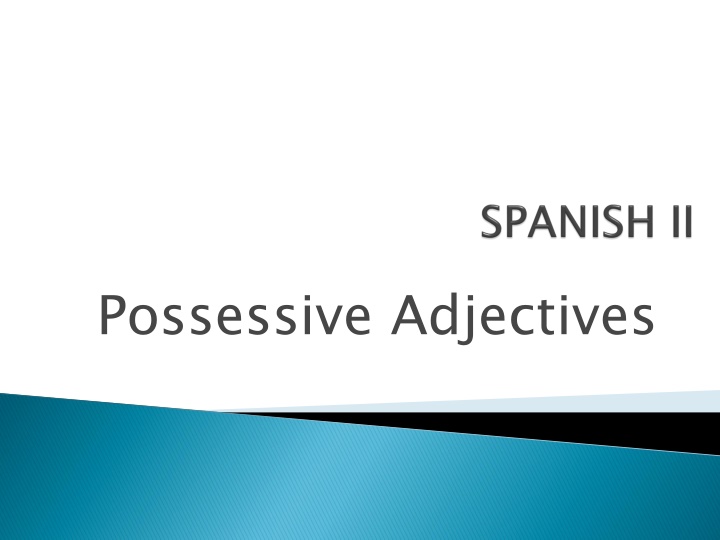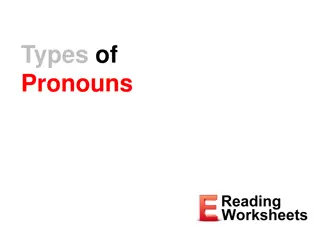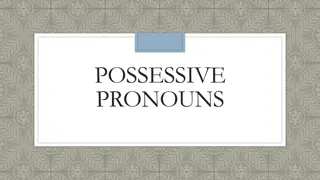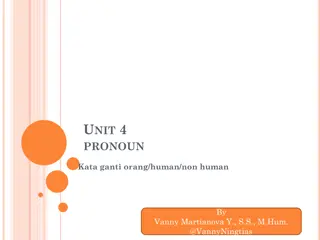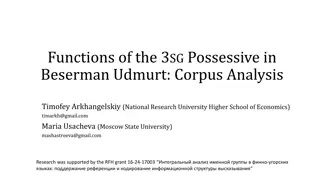Possessive Adjectives
Possessive adjectives, such as "my" and "su," signify ownership and relationships in both English and Spanish. They must agree with the gender and number of the nouns they precede. Explore examples and nuances of using possessive adjectives for effective communication.
Download Presentation

Please find below an Image/Link to download the presentation.
The content on the website is provided AS IS for your information and personal use only. It may not be sold, licensed, or shared on other websites without obtaining consent from the author.If you encounter any issues during the download, it is possible that the publisher has removed the file from their server.
You are allowed to download the files provided on this website for personal or commercial use, subject to the condition that they are used lawfully. All files are the property of their respective owners.
The content on the website is provided AS IS for your information and personal use only. It may not be sold, licensed, or shared on other websites without obtaining consent from the author.
E N D
Presentation Transcript
Adjectives DESCRIBE nouns, correct? Well, they can also show possession. Adjectives DESCRIBE nouns, correct? Well, they can also show possession.
Here are the possessive adjectives in English: my, your, his, her, our, and their. Here are the possessive adjectives in English: my, your, his, her, our, and their.
It s like saying my dog, your house, his notebook, etc. It s like saying my dog, your house, his notebook, etc.
Here are the possessive adjectives in Spanish! Possessive adjectives show ownership or relationships between people. They are placed before the noun.
singular mis singular plural a, os , a, os plural mi / mi / mis (my) (my) nuestro a, vuestro inf.) su formal.) nuestro os, as (our) os, as (your , as (our) , as vuestro, a, (your inf.) su / / sus or (your formal.) tu / / tus tu tus (your) (your) su / / sus or (your formal.) su formal.) sus ( (his,her or (your his,her) ) sus (their) or (your (their)
In Spanish, many possible meanings (his, her, its, your, their). Context usually makes the meaning clear. In Spanish, the possessive adjective su su has
Some examples: mi tu su nuestro nuestra mi hermano mis tu abuela su hijo nuestro t o nuestra t a mis hermanos tus tus abuelas sus nuestros nuestras sus hijos nuestros t os nuestras t as
The possessive adjective must be singular if the noun is singular and plural if the noun is plural. The possessive adjective must be singular if the noun is singular and plural if the noun is plural. While possessive adjectives refer to the owner, their form agrees in gender and number with the noun that comes after them.
Mi prima es alta. Todas mis primas son altas.
Son rubios los hermanos de Rafael? No, sus hermanos son pelirrojos.
In Spanish there are NO apostrophes. You cannot say, for example, Jorge s dog, (using an apostrophe)
You must say, The dog of Jorge, only in Spanish. Like this: El perro de Jorge.
